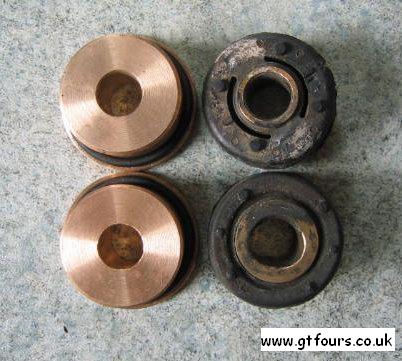In these pages we hope to help solve some of the more common ones
To narrow down the range of options please choose your car model below
| Suspension | Braking | Gearbox |
| Engine | Check Engine Light | Turbo |
This is a common problem on the GT4, and is generally caused by movement in the rear differential.
It is caused by a failure/breakdown of the stock differential mounting which has a large rubber bush in it. Over time this rubber slowly fails until it allows the differential to move creating the characteristic clunk
There is an excellent write-up on diff cushion replacement here on gtfours.co.uk
